Lead Remediation Project in Akhtala, Armenia
Project dates: 2015- 2018
Number of people at risk: 2100 residents, including 600 children
Source of pollution: Former copper and silver ore processing and smelting
Project implementers: Blacksmith Armenia
The total cost of program implementation: $150,000, the project was funded by Armenia fund USA, co-funded by European Union, UNIDO and Trust for Mutual Understanding.
The project was implemented in 2015-2018 with financial and organizational support of Pure Earth/Blacksmith Institute by members of the current Armenia EHPMI team.Project dates: 2015- 2018Number of people at risk: 2100 residents, including 600 childrenSource of pollution: Former copper and silver ore processing and smeltingProject implementers: Blacksmith ArmeniaThe total cost of program implementation: $150,000, the project was…
Akhtala is a small town in the Lori Province of Armenia, located along the Debed River and its tributary Shamlugh River, on the slopes of Lalvar mountain, 186 km north of the capital Yerevan and 62 km north of provincial center Vanadzor.
The main tourist attraction of the area and the place for local holidays and leisure activities is Akhtala Monastery complex. During the 18th century, the village known as Akhtala was part of the Borchalu region of Tiflis governorate under Russian rule. Starting from 1763, Greek experts from Gümüşhane arrived in Akhtala by the request of King Erekle II of Georgia, to utilize the copper and silver mines and establish the copper and silver factory in Akhtala region.

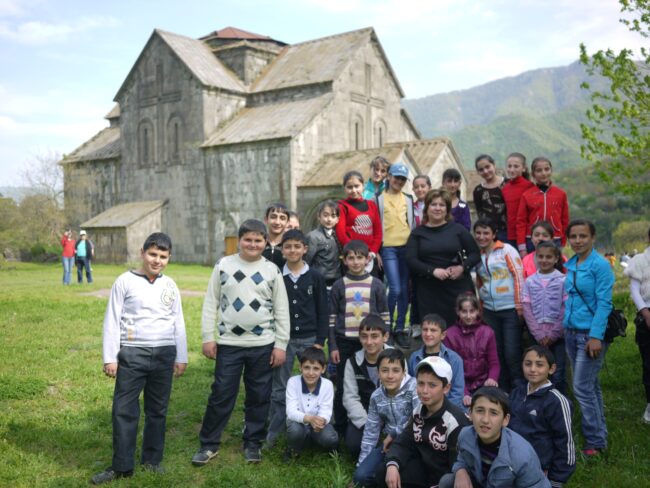
The area around the church in Akhtala has been identified as one of the most contaminated locations in Armenia. The copper and silver ore processing and smelting took place right next to the main church building. The mining and smelting of copper and silver were active supposedly through 18th century. As the result the area is highly contaminated with heavy metals including highly toxic lead and arsenic. The concentrations of arsenic and lead in the soil at this site exceed US Environmental Protection Agency (EPA) criteria by 25 times and 76 times, respectively. The 2018 measurements of soil at churchyard showed high level of lead contamination up to 47,650 ppm.
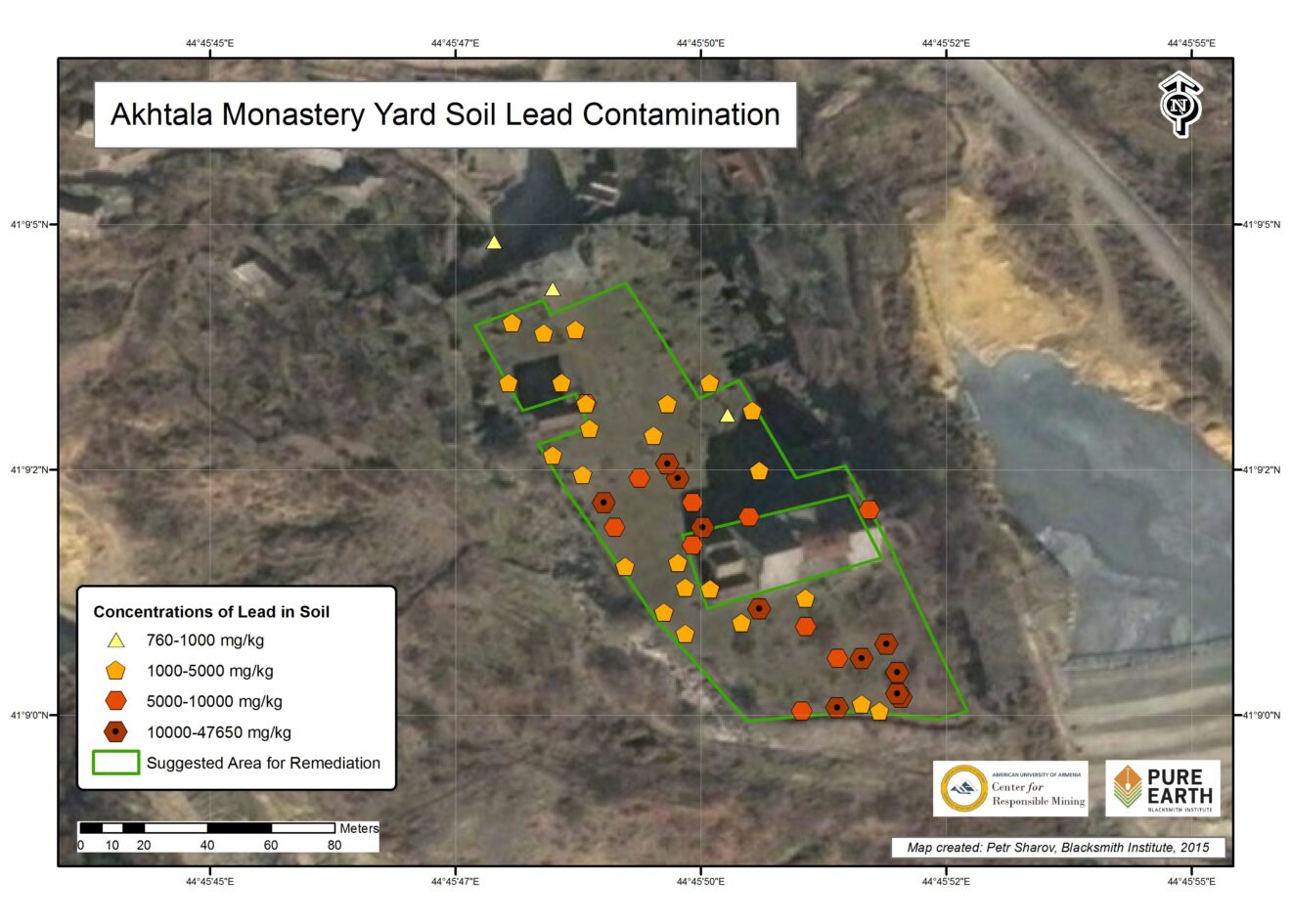

The population of Akhtala is 2,400 people. There are three kindergartens and 2 schools. About 600 children attend these institutions. These children spend some time playing in the churchyard.
The main goal of the project was to reduce health risks associated with exposure of children to lead in highly contaminated churchyard in Akhtala.
The process of preparing project documentation lasted from September 2017 to September 2018.
The Public Hearing in Akhtala community took place on September 5th, 2017. Father Hetum, pastor of the Akhtala Church; Mr. Haykaz Khachikyan, Mayor of Akhtala; the local school principal and other members of the City Council expressed their support of the project implementation. The local community support was vital for the successful implementation of the project, both for effective health risk reduction, and future tourism development.
Akhtala Monastery is an important and very beautiful object of cultural heritage. It is one of the popular symbols of Armenia. Therefore, the project team received approval from the Ministry of Culture and Armenian Apostolic Church.

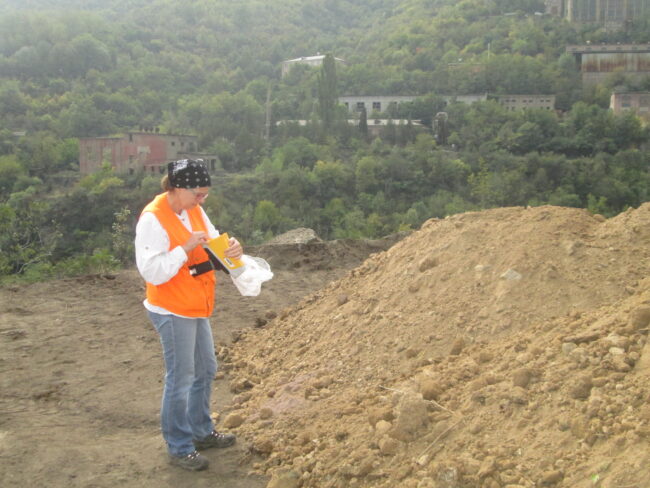
In October 2018 Petr Sharov met with the contractor “V.N.S. Shin” LLC at the site to start remediation activities.
The project coordinator, Lusine Taslakyan together with technical experts Barbara Jones and Robert Kurkjian tested several areas within a few kilometers of the site with portable X-Ray fluorescence spectrometer (XRF*) as possible sources of fill soil and/or top soil (fertile soil), to verify that the criteria for lead and arsenic could be met. The fill soil from a location across the river was determined to be preferable, both because of lower lead levels and an easier haul route.
* The XRF analyzer provides real-time elemental analysis. It is a nondestructive method, and the output can be tailored to project needs. The instrument is placed on the soil to be tested, the trigger is pulled, and results are provided on a screen within seconds. The results are also logged for later downloading and analysis. This instrument is equipped with a global positioning system (GPS) function to provide location information for each test.
The delivery of clean fill soil began on October 9, 2018, and all truck loads were tested as the soil was delivered, to confirm its suitability as a protective cover. Before placing the clean fill, the area was scraped of existing vegetation, graded, and contoured. A geotextile marker fabric was placed, and the clean fill was placed on top of the geotextile fabric.

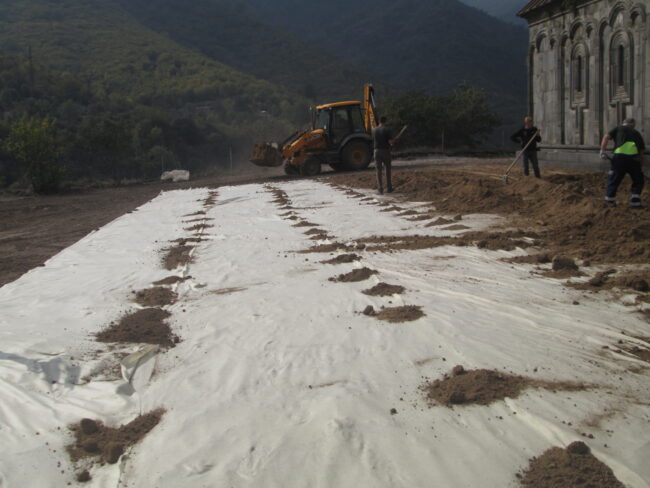
The area was covered with a 15cm layer of clean soil, and with a 5-7cm of top soil. Overall, 160 trucks of soil were brought to the site for the first layer and about 80 trucks of fertile top soil.
After filling the clean soil, the team of experts carried out a series of concentration measurements with an XRF. Based on the test results, the experts recommended additional soil placement around the headstones as far as the fill soil placement was a little thinner and more irregular around the stones. The contractor was advised to get his crew to hand place and compact more soil in this area.
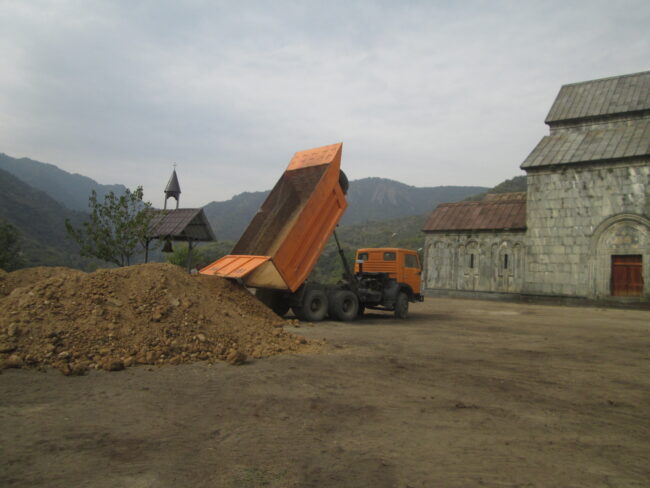
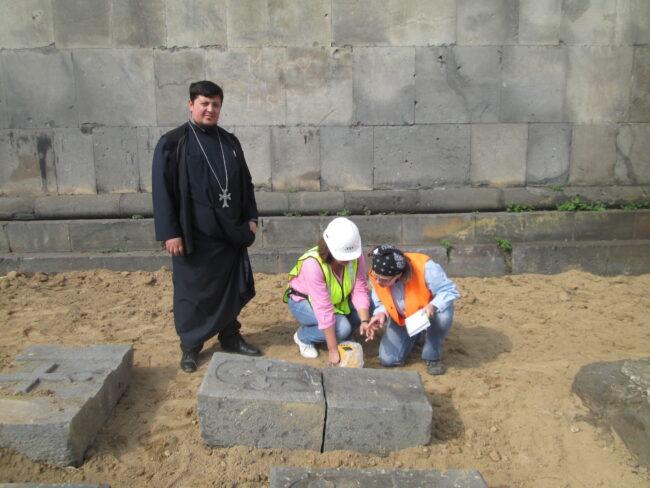
To prevent washout and wind erosion of the bulk soil, the project team purchased high quality lawn grass seeds and sowed the entire area. An irrigation system was installed for watering the lawn.
Upon request from the Ministry of Culture, at least one basalt path was requested to be built from the entrance to the fortress up to the church. Although the architectural plan was to build a 120cm wide path, project team agreed that 200cm width would be more functional. Fragments of the church dome and other pieces of basalt stone with ancient curved ornaments were stored along the east side of one of the church structures with care.
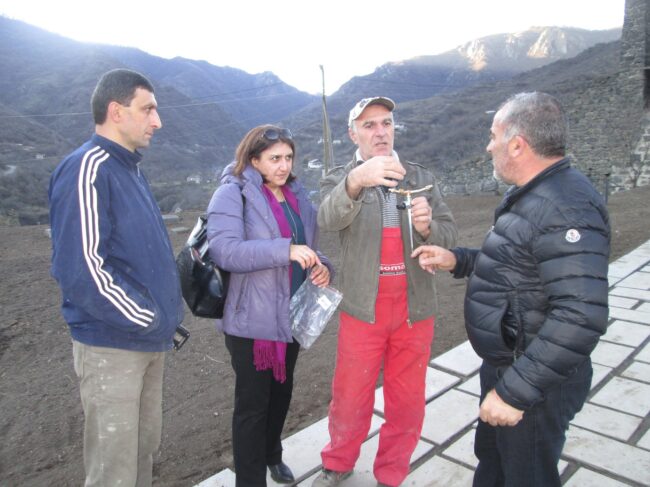

The main soil cleanup was done with heavy machinery, but involved significant amount of hand work and took about two months.
After placing the new soil layer, measurements of soil via XRF were done to ensure that the area is now clean and safe. All tests showed very low concentrations of heavy metals within Armenian and international standards.
Lusine Taslakyan, Project Coordinator: “Lead Remediation Project in Akhtala was challenging but extremely rewarding when I saw the results of our efforts right away. Even now, after four years, I feel proud and happy for being part of this journey that eventually succeeded and transformed the surroundings of that beautiful 10th century church into a greener and safer place for the local community and visitors from all over the world.”
In June 2022 the EHPMI team experts from Mongolia, Russia, Armenia, Georgia, Ukraine, Tajikistan, Kyrgyzstan, and Kazakhstan visited the site in Akhtala. The purpose of the visit was to see the results of the project, provide additional quality control, meet with stakeholders and plan further actions.
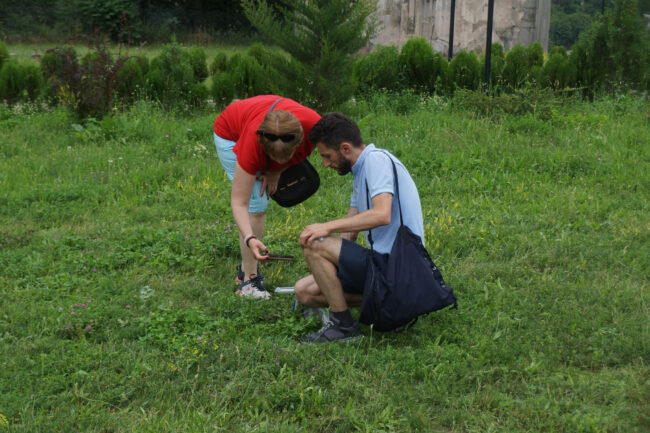
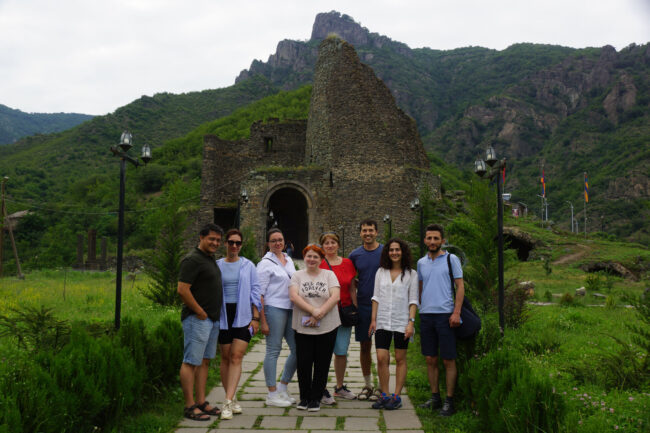
While at the site, the Armenian investigator Vardan Hayrapetyan made measurements using XRF, which showed that soil lead concentrations in the cleaned area did not exceed safe levels. The team met with Father Hetum, who expressed gratitude from the whole community and willingness for further cooperate on future risk mitigation activities in the area.
While the churchyard is now clean and looks very nice, other parts of Akhtala remain contaminated with lead, arsenic and cadmium. A more detailed assessment of the area is needed to identify contamination hotspots and plan remediation activities.
Link to project description at PE website:
